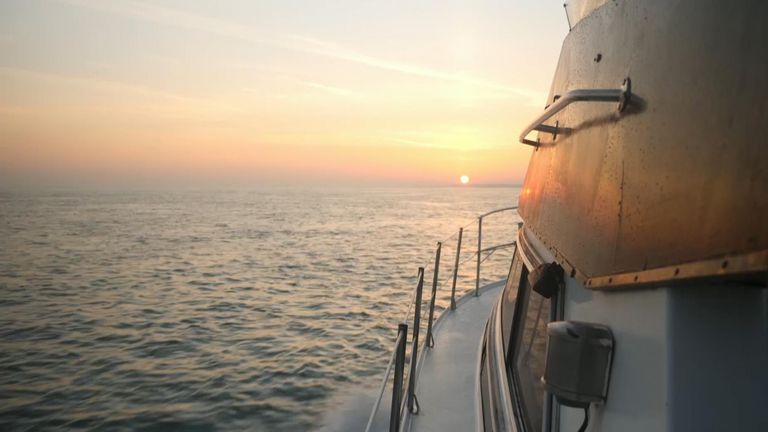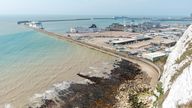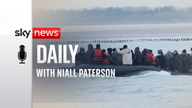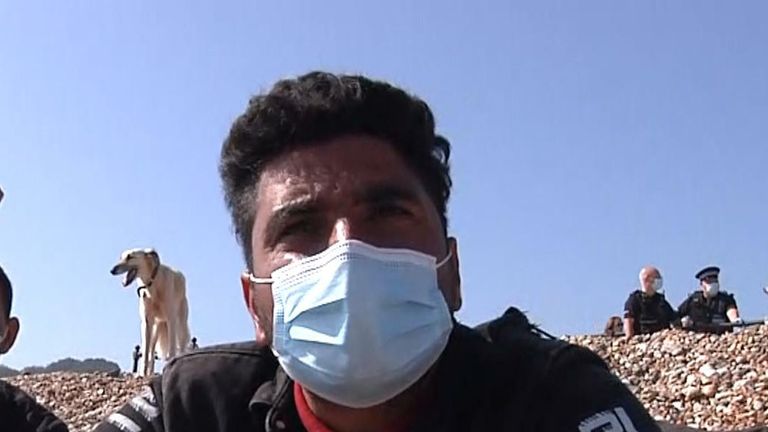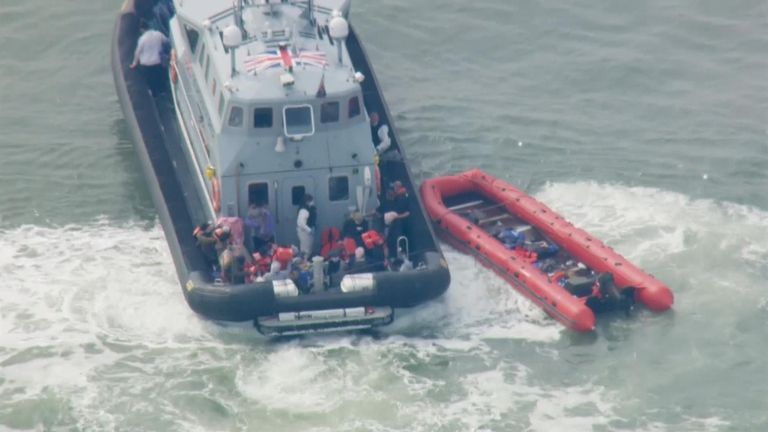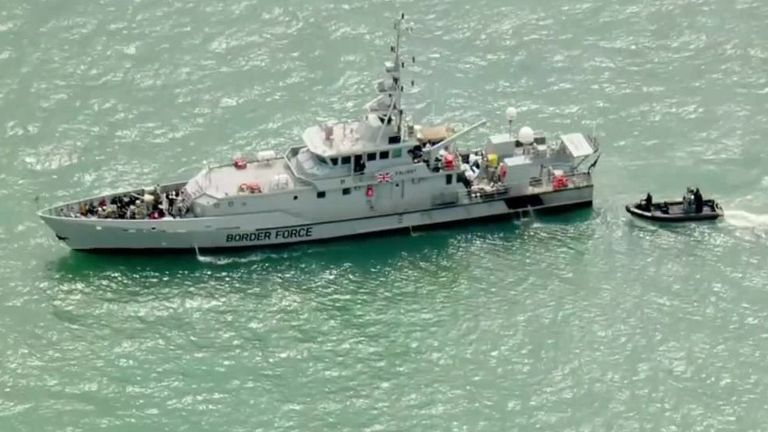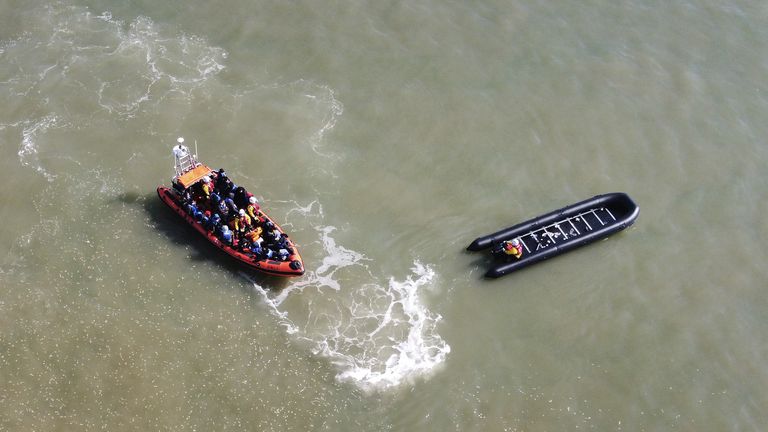Migrants 'see the UK as El Dorado so they'll keep coming', say people in Calais
During the day in Calais, you can spot a visible police presence around the beaches and surveillance planes flying - but it seems counter-intuitive because most migrant crossings start at night.
Wednesday 8 September 2021 14:51, UK
As we clamber on board the boat, the darkness and quiet envelopes all.
It is 3.30am in Calais, and the only thing I can see moving is the town's lighthouse.
But we are here with a mission - to take a brief snapshot of the battle between the migrants trying to leave shore, and the French attempts to intercept them before they get going.
After all, you might think, just how difficult can it be to spot boats laden with people, pushing off from beaches?
And the answer, I suspect, is that it's a lot harder than we might think.
At night, and without the benefit of a full moon, the waters of the Dover Strait have a curious ability to deceive you all the time.
For a start, despite the twinkling lights from the shore and from other boats, the sea seems almost jet black.
It's like moving through a vast pool of ink, apparently absorbing light without reflecting much back.
And even when you can see movement, then you fall prey to the other trick that the water plays on you - you see a shape and you can't know whether it's a bird, some flotsam or something more solid.
Or perhaps it was just a wave crashing.
The coastline is long and inconstant, with a mass of beaches and inlets. Hiding places, in other words.
Our skipper, a sun-hardened local who has manoeuvred through these waters for many years, described it as the perfect location for people smugglers to get migrants on to the water.
He told me of a near-miss in the gloom when he, an experienced sailor, had not seen a laden dinghy until it was a few metres away.
We continue along the coast.
It is this time of the day when migrants often leave, using the cover of darkness to get away from the French coast and into British coastal waters.
Even here, when the sea was calm and the weather simply chilly, it would clearly be a dangerous journey, for the Channel is always busy with large ships.
A ferry comes past us, ploughing up the water and rocking our boat.
We also see a French patrol vessel, equipped with a powerful searchlight, completing a sweep along the coast.
But then it's gone, and the cloak of darkness returns.
A couple of hours later, we see another one, farther from the coast.
It's not exactly a maritime ring of steel, but the French maintain they have increased their patrols and are doing all that they can in the face of a complex problem.
Small dinghies, for instance, are made of plastic - they don't show up well on radar.
We spot flashlights on the shore and, through the lens of a thermal imaging camera, we can see a boat being dragged to the beach.
After 20 minutes of watching and waiting, it turns out to be two fishermen.
An hour later, we spy another boat slowly bobbing away from France.
This, too, turns out to be fishermen.
The Channel is awash with false alarms.
The impression I get is that security is raised during the day.
Certainly you can spot a visible police presence around the beaches and surveillance planes flying.
But the problem of beefing up the presence during daylight is that it seems a bit counter-intuitive, when everyone knows that most migrant crossings start at night.
In daylight, of course, small boats are a lot easier to spot, so the planes can be more effective.
Everything for the authorities is a lot easier when they can see around them with the naked eye.
And that, just as obviously, is another reason why migrants so often cross at night.
The answer may be to throw a lot more resources at the problem - more patrol boats, surveillance planes that fly at night, officers patrolling every beach at night, drones buzzing over the coast.
But all that will stretch France's technology, political will and budget.
And, among the locals I spoke to, there was no desire at all to see more disruption in Calais to help what one person pointedly referred to as "an English problem".
The light rises, and we slowly return to port.
No, we didn't see any migrant boats, but it's quite conceivable that they were out there, near us but invisible in the waves and the darkness.
"They see your country as El Dorado so of course they're going to keep coming," one local said to me, and it's true that people will continue to risk this perilous crossing in search of what they imagine to be a better life.
Stopping them isn't - and may never be - easy.

